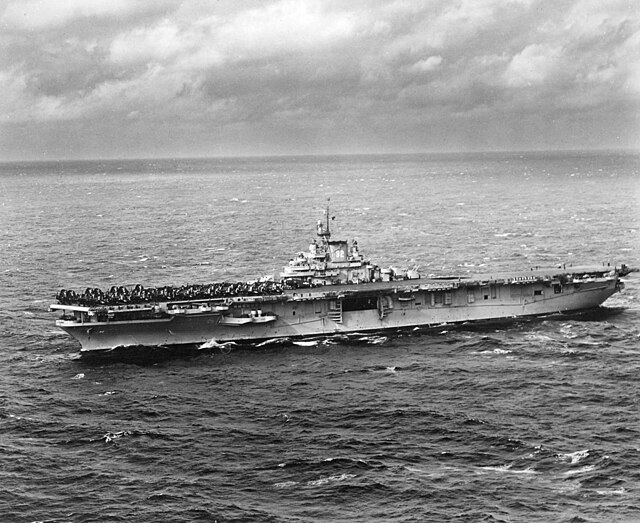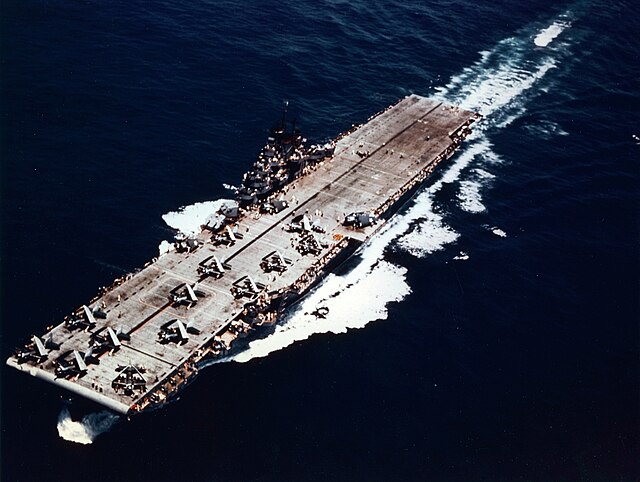USS Bunker Hill was one of 24 Essex-class aircraft carriers built during World War II for the United States Navy. The ship was named for the Battle of Bunker Hill in the American Revolutionary War. Commissioned in May 1943 and sent to the Pacific Theater of Operations, the ship participated in battles in the Southwest Pacific, Central Pacific and the drive toward Japan through Iwo Jima and Okinawa, and air raids on the Japanese homeland.
USS Bunker Hill at sea in 1945
Bunker Hill under attack, 19 June 1944
Bunker Hill's flight deck after the carrier was struck by two Kamikazes on 11 May 1945
Bunker Hill as a stationary electronics test platform, 1967
Essex-class aircraft carrier
The Essex class is a retired class of aircraft carriers of the United States Navy. The 20th century's most numerous class of capital ship, the class consisted of 24 vessels, which came in "short-hull" and "long-hull" versions. Thirty-two ships were ordered, but as World War II wound down, six were canceled before construction, and two were canceled after construction had begun. Fourteen saw combat during World War II. None were lost to enemy action, though several sustained crippling damage due to kamikaze attacks. Essex-class carriers were the backbone of the U.S. Navy from mid-1943 and, with the three Midway-class carriers added just after the war, continued to be the heart of U.S. naval strength until supercarriers joined the fleet in the 1950s, 1960s and 1970s. Several of the carriers were rebuilt to handle heavier and faster aircraft of the early jet age, and some served until well after the Vietnam War. Of the 24 ships in the class, four of the carriers: Yorktown, Hornet, Lexington, and Intrepid, have been preserved as museum ships.

USS Philippine Sea (CVA-47) underway in 1955
1941 design plans for the Essex class.
Leyte underway in 1948
Yorktown at sea in 1943








